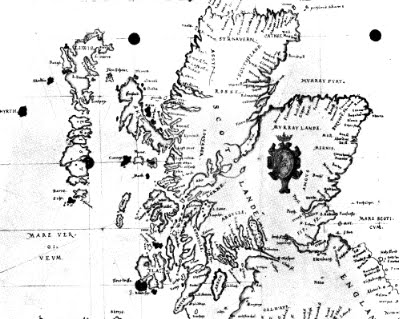On Scotland’s People…
This article is cross-posted from Lallands Peat Worrier

The Scottish Household Survey “is a continuous survey based on a sample of the general population in private residences in Scotland” which is “designed to provide reliable and up-to-date information on the composition, characteristics, attitudes and behaviour of Scottish households and individuals, both nationally and at a sub-national level”. The numbers of respondents are very large – running into the tens of thousands – and as a result, it is always an exciting moment for obsessives when new annual figures are published. My remarks of last year bear repetition:
I’m a great fan of quantitative social research. While much of the texture of people’s lives are lost by its persistent reduction of lived experience to a webway of percentages, percentiles, means and medians, groups above or below average, the quantitative view invariably tells us something we did not know, or only dimly appreciated. I’ve found that life exercises strong temptations to regard the self and your ordinary life, universalised, as the ordinary condition of most men and women. While sometimes, images and information succeed in temporarily rebuking this jealous sense of one’s own ordinariness, it tends to return, the lives lead by our fellow citizens collapsing once again into our own experience, its tenor informed by the settings in which we loiter and the people we meet. Big, hefty quantitative research is uniquely empowered to give those comfortable assumptions a shoogle. Even if the aggregation of conceptual categories can be problematic, and leave us empty-handed in terms of the whys and wherefores which brings that state of affairs about, the social frame is sketched in in our minds. We know ourselves better. That at least is my polemic on the goodness of quantitative research, and the interest in the Scottish Household Survey…
The survey’s concerns are domestic and civic, capturing forms of life in Scotland in broad quantitative categories, from marital status to housing tenure, internet access to participation in “cultural activities”, rates of smoking to rates of saving, perceptions of anti-social behaviour and attitudes to peoples’ environments. For example, did you know that 51% of Scotland’s adults (folk aged 16 or over) are married, while 1% are in same-sex civil partnerships, while 6% reported being divorced, while a further 3% were separated? Or that 46% of men are in full time work in Scotland, compared to 28% of women, while only 1% of men “look after the home/family” compared to 10% of women? All is not entirely positive. In particular, I get agitated by “ethnicity” statistics. In particular, how can white or black be ethnic categories? Isn’t white a loose coalition of pinkish pigments? I’m at a loss to see how skin colour can plausibly relate to the cultural and social differences that support ethnic distinctions. Indeed, such categories are basically racialising, however innocently the statisticians might have resorted to them. Here are just a few of the other statistics which caught my eye.
On housing tenure…
In 2008-09, 66% of householders “owner occupied”, with 22% in social rented housing, 10% in private rented housing and 2% making some other arrangement. This is much the same as last year, save that social housing loses ground 1%, accruing to private rental tenure. We don’t always notice transformative social changes. If we needed a reminder, contrast 2009’s figures with those a decade previously. While in 1999, owner occupation was still a high 61%, 32% of respondents at that time lived in social rented housing, compared to only 5% who undertook private leases. The shifts are even more telling if we leap back further in time to 1961. At that time, only 25% of folk owned and occupied their own houses. Returning to the “15% most deprived”, the rate of home ownership within this category is 39%, up from 34% last year. Social rented housing remains the predominant form of housing tenure among the most deprived at 53%, decreasing from 57% last year.
Safe walking home alone?
In the middle of a very fulsome section on attitudes towards our civic habitats, risks of crime and perceptions anti-social behaviour, they asked three quarters of their respondents if they felt safe walking home alone at night. 75% of adults said they felt fairly or very safe doing so, while 20% of the total feel imperilled doing so. However, the figures also bear out the fact that men and women’s comfort occupying public space and perceptions of endangerment differ. While most respondents of both genders felt safe, there was a 19% difference, with 85% of men feeling safe in the posited situation, compared with 66% of women. On the very unsafe or bit unsafe side of things, only 12% of men reported concerns, while 30% of women thought they were endangered, walking home alone at night.
On smoking…
In 2009, 24.3% of respondents smoked, a decrease on last year in line with an (almost) continuous reduction in smoker numbers since 1999, when 30.7% of the population partook. Men have a higher rate of smoking than women, 26% of the chaps doing so compared to 23% of the chapesses. Smoking is most common among men aged 25 – 34, 33% of them lighting up. While only 3% of those still at school owned up to nicotine use, a massive 59% of those unable to work due to short term illness do so, followed by 51% of the unemployed seeking work and 48% of those classified as permanently sick or disabled. Like so many of these figures, deprivation looms large here. The contrast is at its most delineated when the most deprived 15% is compared with the rest of Scotland. Remember the average rate of smoking across the population is 24%. 41% of the most deprived Scots smoke, compared with 21% of the rest of the country.
On “life satisfaction”…
A rather irritating phrase one can imagine a vacuous life coach goading their devotees with. However, not an insignificant concern, one’s fundamental happiness with one’s existential lot: “All things considered, how satisfied are you with your life as a whole nowadays on a scale where 0 means extremely dissatisfied and 10 means extremely dissatisfied?” This question is new to the Survey and happily revealed that 15% are extremely satisfied with life and that 86% of all respondents choose positive numbers, 8 being the number selected by the highest number of people (29%). Women were slightly more disposed to express extreme satisfaction than men, 17% of women doing so to 13% of men. Many older people seem to be having a whale of a time. Just under a quarter of 60 – 74 year olds (21%) said they were extremely satisfied with life. That said, 11% picked the middle point on the scale, presumably denoting neither satisfaction nor dissatisfaction with their continuing vitality.
On internet use…
In the last quartile of 2009, 67% of households were connected to the internet, up from only 40% in the first quartile of 2003. In 2008, 68% of men use the internet, whether on a personal computer or at work, while 30% don’t. Amongst the ladies, 61% make use of it on the same terms, with a 7% hike in female internet non-use, up at 37%. Recently published figures show that use continues to rise, with 71% now making use of the internet whether at work or at home, while only 27% never make use of it. On the female front, usage now stands at 67%, compared to only 31% who never give it a go. Age clearly plays a part in this. That said, a great many people across the generations now have access. While an overwhelming 90% of 16 – 24 year olds have access, although usage declines slightly from this useful high, usage remains in the 70s and 80 percentages until a sharp decline in those over 60 to just under 50%. On the phenomenon of the “silveriest surfers” in Scotland, the figures show that 90% of women over 75 still don’t use the internet – while 19% of more tec-savvy chaps over 75 “surf”. Affluence makes itself felt here. Only a tiny 4% of those in households with incomes in excess of £40,000 do not use the internet. In stark contrast, of those in the 15% of households which are most deprived, a significantly larger 42% of people don’t connect.
On banking…
Asked, do you have a bank or building society account? 93% said yes, while 4% confirmed they did not, another 3% not owing up, one way or the other. Contrast this with 1999, when 86% of respondents confirmed accounts, while a significantly larger number – 12% – had no account in the household. Here’s an easily overlooked deprivation variable. While only 7% of all respondents had a Post Office card account, among 14% of those who are most deprived have one. Compared to the 1% of the total population with no account of any description, in line with last year’s results, 4% of the most deprived continue without one.
On reading for pleasure…
Books are great friends and boon companions in my life. 63% of the population think so too, reading for enjoyment’s sake, but sniffishly excluding newspapers, magazines and such like. Affordably printed and made available through public libraries, books have a potentially emancipatory, democratic accessibility, partially reflected in the responses. While those with degrees are the most likely to read (82%), 47% of those with no qualifications. Women are keener bibliophiles than men, 69% of them reporting an enthusiasm for reading, compared to 57% of men. Moreover, for most readers, their books are almost constant companions, 83% dipping into one at least once a week, with 10% doing so less often than weekly, but certainly once a month.
Those are just a few, hastily collected bits and pieces. The report itself runs to over a hundred pages, with innumerable graphs and divisions by category. For those of you who enjoy a good going bout of social research in your spare time, you can read the whole publication here.




Your entire blog post, “On Scotland